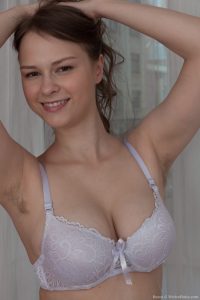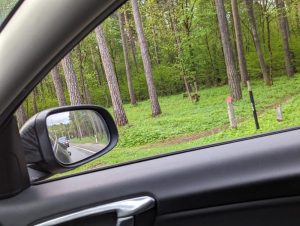In late May 2021, Denis Villeneuve and his key collaborators were settling in at soundstages in Budapest, Hungary, when the director revealed that production on Dune: Part Two would begin with one of the boldest creative choices of the whole project.
“Denis was still using the mornings to write, while we were busy prepping,” recalls cinematographer Greig Fraser, who won an Oscar for his work on Dune: Part One. “And he came out of his office one day to grab a coffee or something, and said to me, ‘I’m thinking that the scene on Giedi Prime should be black and white.’ I said, ‘That’s genius — and I’ve got a great idea.’”
“I didn’t want to just explain it to him, though,” Fraser adds. “So I said, ‘Give me a day, and I’ll show you.’”
One of the biggest visual challenges Villeneuve and his team faced in adapting Frank Herbert’s seminal 1965 sci-fi novel into two feature films was how the story’s villains, House Harkonnen, should look. Dune: Part One gives glimpses of the Harkonnen world, led by their Machiavellian leader, Baron Vladimir Harkonnen, played with Brando-esque menace and bravado by the great Stellan Skarsgård. But the story of Part Two would entail a lengthy sequence on the Harkonnen home planet of Giedi Prime, where the Baron’s sadistic nephew, Feyd-Rautha — an almost unrecognizable Austin Butler — proves himself a worthy leader in a rousing arena combat scene. The episode marks Feyd-Rautha as the story’s chief antagonist to Timothée Chalamet’s hero, Paul Atreidies, setting up their eventual showdown at the movie’s climax.
“In the book, [the Harkonnens] are a culture that inspires a lot of fear — with fascism, cruelty and paranoia — but there are not a lot of clues about what that world looks like, apart from the fact that it’s very industrial,” Villeneuve says. In contrast, the desert planet of Arrakis and its native Fremen people are richly described.
“One thing that I love about the book is how Frank Herbert explores the idea that humans are sculpted by their environment and by their ecosystem,” Villeneuve explains. “For example, if you want to know about Fremen culture, Fremen religion, Fremen technology, Fremen poetry or Fremen behaviors, you watch the desert. You study the desert, and it will inform you.”
To flesh out the contours of Giedi Prime, Villeneuve followed Herbert’s logic, but in reverse: Starting with the Harkonnens’ twisted, power-hungry psychology, he imagined an alien environment that might have given rise to such a worldview across centuries of evolution.
“In order to find something that would inform us about their psyche, I thought it would be interesting to use light,” Villeneuve remembers. “What if their sun, instead of revealing colors, were killing the colors? It would be a sun that will inform us about the way they see the world in a very binary way. So I came up with this idea of a daylight that emulates black and white.”

Austin Butler as Feyd-Rautha Harkonnen in ‘Dune: Part Two.’
Warner Bros
For Dune: Part One, Villeneuve and Fraser had invented an original film format that captured qualities of both digital cinematography and traditional film stock, infusing the movie’s images with an almost contradictory feeling of futuristic timelessness. Fraser shot the movie with an Alexa LF, ARRI’s large-format digital camera, but then transferred the image onto 35mm film, which was then processed and scanned back into digital.
“It gave us something that was kind of futuristic, but it wasn’t too clean and too sharp, and it also wasn’t analog,” Fraser says. “It was something in between, where you can’t quite put your finger on it. That’s the ideal scenario, where there’s enough familiarity, but you feel that it’s something you’ve never seen before.”
Filming the Harkonnen in black and white would force Villeneuve and his DP to engage with the same fundamental problem. There was a risk that the black-and-white depiction could look a touch old-fashioned or nostalgic — Metropolis meets Giedi Prime. What could the in-between be?
“I wanted the light to be an alien light, something that will feel from another planet,” Villeneuve says.
Fraser, as it turned out, was the ideal cinematographer to receive such a brief. During his work lensing Kathryn Bigelow’s Oscar-winning thriller Zero Dark Thirty (2012), he used infrared cinematography to illuminate sequences where U.S. special forces raid Osama Bin Laden’s compound with the aid of night-vision goggles. Infrared light is a region of the electromagnetic spectrum that sits outside the range of natural human vision, and capturing it with a digital camera creates images of a peculiar, ghostly quality.
“It got me very interested in that world, but on the previous films I worked on, I never found a use for infrared that served a narrative purpose,” the DP recalls. “So when Denis described what he was looking for, I was really pumped.”
By their design, the sensors inside professional digital cameras capture both infrared and the components of visible light — blue, green and red. The infrared light, however, is known to subtly distort a captured image — “the infrared bleeds in and it becomes slightly reddish,” explains Fraser — so, by default, camera makers insert an infrared-cut filter over their devices’ sensors to prevent infrared contamination.
As a test in Budapest, Fraser modified one of his crew’s cameras by removing its infrared-cut filter from the sensor while adding a visible light-cut filter over the lens.
“If you tried to look through it, you couldn’t see anything — it was even darker than a welding glass — because it was physically removing all visible light, so the camera was purely seeing only infrared,” he explains.
With this set-up, Fraser spent a day preparing a demonstration for Villeneuve, shooting test footage with Roger Yuan, the actor and stunt coordinator cast as the fearsome Atreidies soldier who fights by blade with Butler’s Feyd-Rautha in the arena.
“When I showed it to Denis, he just flipped,” Fraser remembers.
“I loved how it changed the skin of the characters, so they became almost vampire-like — all porcelain with their veins showing underneath,” explains Villeneuve. “And the eyes became really piercing and dark and insect-like.”
He adds: “It all felt more Harkonnen than ever.”
But the experimental camera setup also meant that Dune: Part Two would be getting underway with an uncommonly high-stakes piece of big-budget filmmaking.
“When you use that system, there is no way to bring back the color, even in post,” explains Villeneuve. “So I had to warn the studio [Legendary Pictures] that what we were doing was irreversible.”
“We had to commit and I love that,” he adds, visibly relishing the thought. “I love when we commit on camera.”
Adds Joe Walker, Dune: Part Two‘s Oscar-winning editor: “It was the first piece of principal photography, which is very ballsy. I was getting infrared images of an almost unrecognizable Austin Butler and a very vicious fight.”
The camera choice also created surprises for other departments that were baffling and, briefly, concerning.
“The biggest challenge beyond anything was the costumes,” Fraser says.
For reasons the Dune production team never fully understood, wardrobe items that appeared black to the naked eye would occasionally be captured as stark white with the infrared camera — and vice versa. Costume designer Jacqueline West had to replace materials on Butler’s seemingly jet-black battle outfit several times because it initially appeared as a patchwork of white and black in infrared — a look Villeneuve described as more “clownish” than sinister. Other elements of the scene’s wardrobe and set would require a similar trial-and-error reconstruction.
“You’ve got to just test and test and test,” says Fraser of the process that ensued.

Patrice Vermette’s set design for Baron Harkonnen’s private bathing chamber on Giedi Prime.
Production designer Patrice Vermette began conceptualizing the Harkonnen world on the first film — Geidi Prime is depicted with a few interior sets and nighttime shots in Dune: Part One — but the follow-up would require him to extrapolate the aesthetic onto vast scales.
Early in the development process, Villeneuve emphasized to Vermette that he wanted the Harkonnen world to be “insectoid” — “like it’s from the insect world: really beautiful, organic curves and a very shiny, oily black.”
During the soft prep phase of Dune: Part One, Vermette says he was driving around the outskirts of Montreal — where he lives with his family, just a short distance from Villeneuve’s home — when he came across a septic tank wholesaler, whose large, bulbous, industrially shaped plastic waste holders were arrayed across the landscape.
“They were just slightly aged and there was a field filled with them — and I had kind of an epiphany,” Vermette recalls. “I was like, ‘My God, this is Getty Prime.’”
“From that, I started studying and researching all these shapes,” he says. “I imagined these structures being gigantic. How to reinterpret these volumes with the curved edges? That was the start of the language.”
“And it all made sense,” he adds, “because what’s inside a septic tank? It’s a bit, you know, what the Harkonnens are.”
Vermette says Villeneuve and Fraser also teased him a little when he unveiled the concept images for his curvaceous, plasticine take on brutalism for the Harkonnen sets — many of which are unmistakably suggestive of S&M aesthetics.
“A lot of people on the set were like, ‘Patrice, you’ve got a dirty mind,’” he says, laughing. “I never thought of that, but it’s true — some of the shapes, I realized afterward, do suggest that.”
Villeneuve insists that this transgressive quality was actually perfectly in line with his vision.
“I wanted there to be a sex appeal to their world, and for people to feel that if there’s a great party going on in the Dune universe, it’s going to be happening on Geity Prime,” he explains. “They’re highly intelligent and sophisticated, and there’s an erotism prevalent in their world — it’s a world where pleasures are seen differently.”
Herbert’s book helpfully describes the Harkonnen battle arena as triangular in shape rather than the ellipse of the Roman Colosseum, but nearly every other visual detail for Feyd-Rautha’s battle sequence on Giedi Prime needed to be dreamt up from scratch.
“The whole scene is about how the crowd’s perception of Feyd-Rautha will change and evolve during the fight — where he will go from being a feared playboy to a leader,” Villeneuve says.
Portraying the Harkonnen hordes who fill the towering arena’s stands was another opportunity to imbue their culture with an otherworldly menace.
“I wanted the crowd not to react like a 21st-century American football crowd,” the director explains. “I didn’t want people to applaud. I didn’t want the people to whistle or to boo.”
During a lengthy development process, Dune: Part Two‘s VFX and sound teams drew inspiration from recordings of death metal concerts, transposing the guttural sounds and violent stomping movements of metal heads into an original Harkoken war dance, somewhat reminiscent of a Maori Hakka.
“We tried to create a different kind of crowd behavior — a behavior that would be in relationship with Feyd-Rautha,” Villeneuve says.
For all its sadism and brutality, the arena fight scene is also a celebration, he adds. “It’s Feyd-Rautha’s birthday, and all of this killing is in his honor. It’s a celebration of him becoming an adult, finally.”
To punctuate this point, Villeneuve imagined “an alien interpretation of fireworks” to explode over the arena as the Harkonnen hero enters the battle triangle. In keeping with Giedi Prime’s color-obliterating black sun, the director tasked his VFX team with creating what he describes as “inverted fireworks.”
“Instead of a burst of color, it would be a burst of blackness,” the director says of the exploding ink-blot effect that his team developed. “To us, it’s nightmarish, but to them, it’s absolutely beautiful. I love that contrast — again, it gives us insight into how these people perceive reality.”

Léa Seydoux as Lady Margo Fenring.
In a mesmerizing scene that comes shortly after Feyd-Rautha’s battle victory, the camera finds the princeling in a meditative mood, walking alone through a grand hall as the Harkonnen masses celebrate his victory outside, under the explosions of their inky pyrotechnics. The young leader soon notices that he is being followed by a Bene Gesserit priestess — Lady Margot Fenring, played Léa Seydoux — who will proceed to seduce him.
“The idea was to create a kind of tension coming from the celebration outside and Feyd-Rautha’s interior thoughts as he broods on this idea he’s just learned from his uncle, the Baron, that he could become the emperor,” explains Villeneuve. “So, the idea came to emphasize this contrast through a kind of stroboscopic, nightmarish light from the fireworks, and then to have that light evolve through the power of Lady Margot Fenring, creating a hypnotic experience for the audience as he’s hypnotized in the most immersive way.”

Lea Seydoux as Lady Margot Fenring.
Niko Tavernise
It fell on Fraser to come up with a way to light a sequence that’s all about a character’s interiority being emphasized by “anti-fireworks.” After a “long process of consultation” with his gaffer and dimmer board operator, the DP devised a solution that involved installing rows of Creamsource Vortex lights — LED panels often used for their hard, punchy light — on each side of the towering hall Feyd-Rautha strolls down. But instead of programming the dimming board with lighting cues, Fraser and his team edited a sequence of found video clips of people welding — the piercing, frenzied light that’s emitted when metal meets metal across an electric arc — and then fed this footage directly into the lighting console.
“What you’re looking at in that lighting is actually people arc welding, but it was a myriad of different video files, and it moves and flashes in different areas as the character moves through the space,” Fraser says.
He adds: “Denis’ brief to me for lighting that scene was: ‘Imagine he’s being lit by fireworks that are anti-light — instead of illuminating, they’re sucking light in.’ It took a lot of experimentation to figure out how to realize that, but my initial reaction was just, ‘Wow, what an amazingly poetic brief to give to your cinematographer as a launching-off point.’
He continues: “This is what I love about working with Denis. When he comes to you with an idea he’s excited about, it’s always something fantastic and interesting — and far outside of the ordinary.”









КОММЕНТЫ